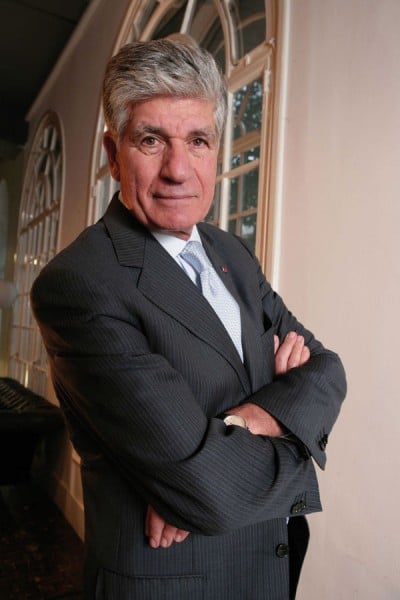
When Maurice Levy gathered his most senior executives together in San Francisco this autumn, one of the most obvious items on the agenda was the need to find a new route to dynamic growth. After a run of disappointing financial results, Levy needed a new story to tell. This month he told it.
Publicis Groupe is restructuring its business model by breaking down its disciplines into four ‘solutions hubs’ with each client led by a chief client officer, effective as of January 2. The modification of the company’s business model puts clients “at the heart” of the organisation, according to a statement from Publicis Groupe. The company’s current structure is built around the concept of worldwide networks but those silos will be broken down to offer clients Publicis Groupe’s “entire know-how and expertise through the power of one”. The performance of the company’s businesses will be judged on client service, with each client led by a chief client officer who will be responsible for all the group’s services and skills, no matter the discipline or country.
Chief client officer teams will be supervised by a Publicis Groupe chief revenue officer. Starcom MediaVest chief executive officer Laura Desmond will takeonthisnewlycreatedrole. The four hubs include Publicis Communications, Publicis Media, Publicis Sapient and Publicis Healthcare.
Publicis Communications will be led by Publicis Worldwide CEO Arthur Sadoun. This hub will com- prise all the group’s creative networks: MSLGroup, Publicis Worldwide, Nurun, Saatchi & Saatchi, Leo Burnett as well as BBH and Marcel. It will also include the production hub Prodigious.
Meanwhile Zenith Optimedia, Starcom Mediavest, Vivaki and the other media agencies will now report in through Steve King, while Sapient’s Alan Herrick continues to lead the Publicis Sapient group of digital companies. The new role marks Sadoun more clearly as front-runner to succeed Levy at the top of the whole Groupe, though no official decision on succession has been announced as yet. The new client officers will manage client profit and loss, and have access to all solutions in the four different hubs. The client-centric structure has echoes of WPP’s client-specific bespoke agencies, which draw on the gamut of WPP companies’ expertise.
Consolidation will be most pointed – and radical – in the smaller markets where the group operates. Publicis Groupe generates more than 90 per cent of its revenue in about 20 countries. All remain- ing countries will now be managed through a dedicated group entity called Publicis One, led by Jarek Ziebinski as CEO. He is currently Leo Burnett Asia-Pacific chairman and CEO.
In Publicis One countries, all entities will be united underoneroofandoneman- agement team. This is designed to ensure better coordination of all client ser- vices while respecting confidentiality. In order to coordinate and best take advantage of the group’s assets, a committee will be set up in the main countries where Publicis Groupe oper- ates to represent all solutions. Each will be led by a group representative, the first to be put in place is a United States committee led by Desmond. The executive committee will soon be reshaped in order to better adapt to the evolution of the group.
It’s hard to see the Publicis Groupe restructure as the best outcome for the indi- vidual creative agencies and their leaders. However, the official statement insists: “Each brand, for instance Saatchi & Saatchi, Zenith Optimedia or DigitasLBi, will keep expanding, with its own culture and specific approach to creativity and services. The identity and the success of each of the Groupe’s brands will be preciously preserved and nurtured.”
Ensuring that’s the case while also serving the demands of a chief client officer who has, perhaps, no cultural affinity to the agency in question will be an interesting challenge.
Yet, while Publicis Groupe’s communication on its new business strategy has been voluble, complete with a 20-minute video by Levy, a lack of clarity remains around the hard facts of the restructure.
For example, what are the 20 markets the group refers to as its key markets, and what are the markets that- are-not-the-20 that will be handed to Publicis One? Who are the clients the group is planning its restruc- ture around? There’s also the question of whether Publicis Media plans to combine its buying power, a move that would make sense.
Publicis Groupe’s problem – and its proposed solution – is not unique, several parties have pointed out. Dominic Proctor, the global president of Group M, said Publicis is “doing now what we did 12 years ago”. Also from WPP, Tom Doctoroff, J. Walter Thompson’s Asia- Pacific chief executive, said: “Clearly Maurice Levy is imi- tating WPP in focusing on cross-operating company col- laboration via a stronger holding company hand—or as WPP chief executive Sir Martin Sorrell likes to put it, ‘horizontality’.”
Charles Cadell, the Asia-Pacific chief executive of IPG-owned McCann Worldgroup, sounded the most positive note among the competing agency heads we contacted. He said: “The restructure seems significant and fundamental. As with all such restructures, it will come with some pain and take some time – but it is likely a smart move. Bonne chance.”









